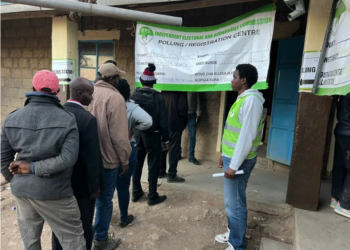Remittance inflows to Kenya rose 7.1 percent in September compared to the same month last year, according to a Central Bank of Kenya (CBK) weekly bulletin published Thursday.
Remittances totaled $340.4 million in September, up from $318 million in September 2022. In the 12 months to September, remittances totaled $4.14 billion, a 3.5 percent increase over the previous 12-month period, the report said.
The September decline marked the second straight monthly drop in remittances – August saw inflows of $354.4 million.
“The US remains the largest source of remittances into Kenya, accounting for 57 percent in September 2023,” the CBK said.
The Kenyan shilling was little changed against major currencies, exchanging at 149.58 shillings per U.S. dollar on Oct. 18 compared to 149.01 a week earlier.
Usable foreign exchange reserves remained “adequate” at $6.83 billion as of Oct. 18, meeting CBK’s requirement to maintain at least four months of import cover, the report said.
Money market liquidity tightened during the week ending October 18 as commercial banks’ excess reserves fell to KES 18.9 billion. The average interbank lending rate rose to 12.58 percent on October 18 from 12.16 percent a week earlier.
A Treasury bill auction on October 19 was oversubscribed, with bids totaling KES 29.6 billion against KES 24 billion advertised. Interest rates were mostly unchanged.
Equity markets declined slightly, with the NASI and NSE 20 indexes down 0.5 percent and 0.6 percent respectively. Market capitalization and equity turnover also edged lower.
Bond turnover surged 193.5 percent during the week, while yields on Kenya’s Eurobonds jumped an average of 74.78 basis points. The yield on Kenya’s 2024 Eurobond rose 161.1 basis points.
Inflation in advanced economies continued to moderate, while the U.S. dollar weakened slightly against major currencies. International oil prices increased amid tensions between Israel and Hamas.


















